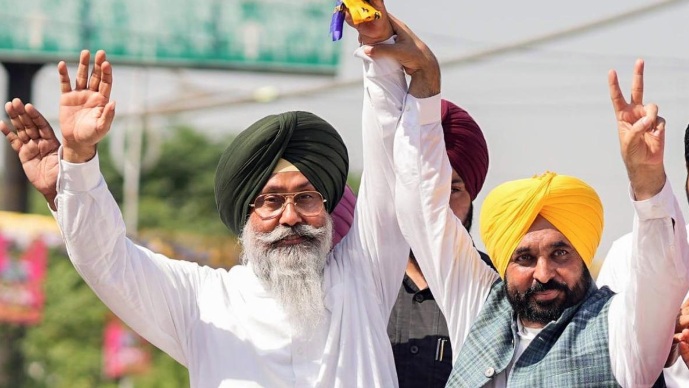Veteran INC Leader Chidambaram says ‘Operation Blue Star’ was Wrong
Panjab: Chidambaram says ‘Operation Blue Star’ was Wrong; Flood Report to India; Paddy Procurement Severely Impacted. Sikh: Desecration in J&K; HSGMC President Loses Support; Story of a Sikh Museum—and other stories.
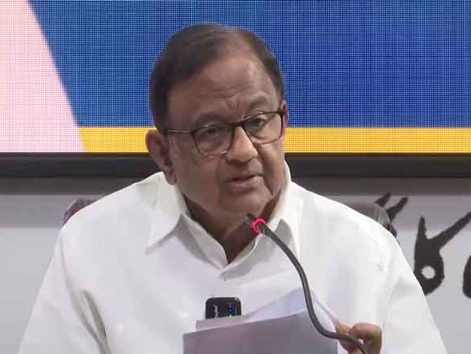
Veteran INC Leader Chidambaram says ‘Operation Blue Star’ was Wrong
On 12 Sep, veteran Indian National Congress (INC) leader and former Union Minister Palaniappan Chidambaram said ‘Operation Blue Star’ (OBS)—the Indian military’s attack on Darbar Sahib (Golden Temple) in Amritsar in June 1984—was 'the wrong way to retrieve' the temple. He said former Prime Minister Indira Gandhi, 'paid the price of that mistake with her life.' However, he sought to deflect attention from Gandhi by saying she should not be blamed because ‘it was a cumulative decision of the Army, the police, intelligence, and civil service.' Chidambaram was speaking at the Kasauli Literature Festival. Chidambram added, ‘A few years later we showed the right way to conduct the Operation by keeping the Army out.’ He was referring to Operation Black Thunder I and II in 1986 and 1988, respectively. Panjab INC leaders responded it was unnecessary of the former Home Minister to rake up the issue as the party leadership, including Rahul Gandhi, had apologized for 'past mistakes'. Chidambram’s statement is a half-truth. Recently General Vishwa Nath Sharma who later rose to Chief of Army Staff revealed that during OBS he was posted at the Director General of Military Operations (DGMO). DGMO and the then General of Indian Army Arunkumar Shridhar Vaidya had refused to conduct OBS as they deemed it unconstitutional and believed the Army should not get into political affairs. After that, Gandhi called then Lieutenant General Krishnaswamy Sundararajan alias Sundarji who was General Officer Commanding-in-Chief of the Western Command and tasked him with OBS. Sundarji decided to assign Lieutenant General Ranjit Singh Dyal and Major General Kuldip Singh Brar and Sikh battalions to conduct OBS. The DGMO did not want to pit Sikh soldiers to fight Sikh separatists but was overruled. Four decades after OBS, INC keeps peddling half-truths to absolve its leadership. Meanwhile, the Lakhimpur-Kheri police in Uttar Pradesh have lodged a First Information Report against former Union Minister of State for Home and Bharatiya Janata Party leader Ajay Mishra Teni, his son Ashish Mishra for threatening witness Baljinder Singh in the case related to the mowing down of four farmers and a journalist during Farmers’ Protests 1.0 in 2021 (earlier coverage).

Panjab’s Flood Report to India Pegs USD 1.45B Losses
The Panjab government has finalized its report on recent floods, pegging the losses at USD 1.45B. The state government has pegged a crop loss at 50-100% in 300K acres, at 25-50% in 200K acres, and detailed the wreckage across 14 departments. The document has been sent to the Indian Union Ministry of Home Affairs. Meanwhile, the farmers wait for compensation and are making their own efforts to clear silt from fields. Shiromani Gurdwara Parbandhak Committee (Sikh body) and non-government organizations are footing the diesel expenses for tractors. Immediately after the floods there was a lot of support but now those who came to help have started going back to their villages to sow the next crop. On 8 Oct, farmers protested at 112 locations across 19 districts of Panjab demanding better compensation. The protest call was given by Sarwan Singh Pandher's farmer union, the Kisan Mazdoor Morcha (Bharat). Pandher said the demands include USD 788 per acre compensation for damaged paddy crops and 10% of that amount for farm laborers, full compensation for livestock and poultry losses, restoration of damaged houses, and fertilizers and seeds for wheat sowing. Concurrently, over 25 union ministers from Bharatiya Janata Party (BJP) have toured villages across the state. The ruling Aam Aadmi Party has termed these trips as ‘disaster tourism’. Panjab BJP has filed a 'charge sheet' against the Bhagwant Singh Mann-led government for 'monumental collapse of governance, preparedness, and accountability' in tackling the recent floods in the state. This isn’t a legal indictment, but is part of the party’s broader 'rural outreach' strategy to increase its foothold in areas where it has virtually no political presence or is facing active antagonism. In a gesture of solidarity with the victims of recent floods, Chandigarh Business Council president Neeraj Bagga said, 'This time the shopkeepers from Sector 17 plaza will be individually dressing up their shops but there would be no grand lighting display' (earlier coverage).
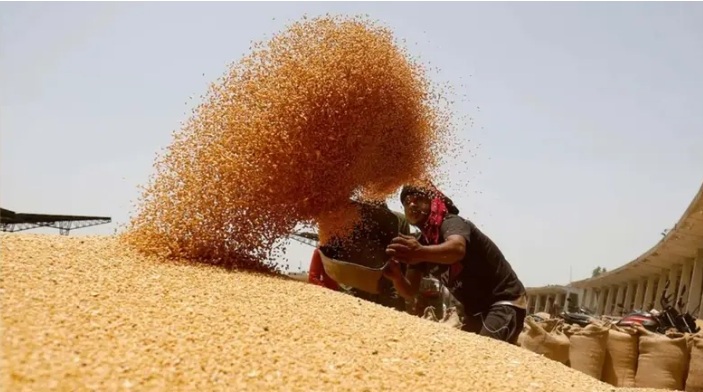
Paddy Procurement Severely Impacted; Uttar Pradesh Tops in Stubble Fires
The Panjab Agriculture Department has reported that heavy rains in parts of Panjab from 4-8 Oct caused delays in paddy crop harvesting and procurement. Data shows procurement remains sluggish, with just 1.05MT of paddy procured till 9 Oct—less than 6% of the 17-18 MT the state expects to purchase in the monsoon marketing season 2025-26. Seven teams consisting of 200 government officers, including those from departments of food supply, grain markets, and police, have started checking truck bills and other documents to verify details of vehicles entering Panjab from other states to prevent bogus purchases and illegal recycling of paddy and rice during the ongoing procurement season. Given the large-scale destruction of crops due to floods and then rains, farmers are waiting for the union government to relax the Fair Average Quality specifications for high moisture and discolored grains to prevent them from incurring further financial losses. Given advancement in date for sowing paddy in Jun for this season, paddy procurement season was advanced from the traditional 1 Oct to 15 Sep. However, the floods and rain have set back the procurement. According to data released by Indian Agricultural Research Institute, low paddy harvest in Panjab has also meant lesser incidents of stubble fires. Between 15 Sep and 10 Oct Uttar Pradesh has had 121 cases, surpassing Panjab's 102 in the same period. Meanwhile, Panjab has seen a 30% surge in units that convert crop residue into pellets used by industries. These pallets can be used at thermal plants for co-firing, a process involving simultaneous combustion of two different types of fuel in the same boiler, often a mix of coal and a renewable fuel, to reduce carbon emissions and manage agricultural waste simultaneously. An official, name withheld, said, 'As the number of the factories has improved to 23 this time, these units can process 465 KT of paddy stubble. With 43 more units in the pipeline, the capacity of these new plants would be 1.17 MT' (earlier coverage).
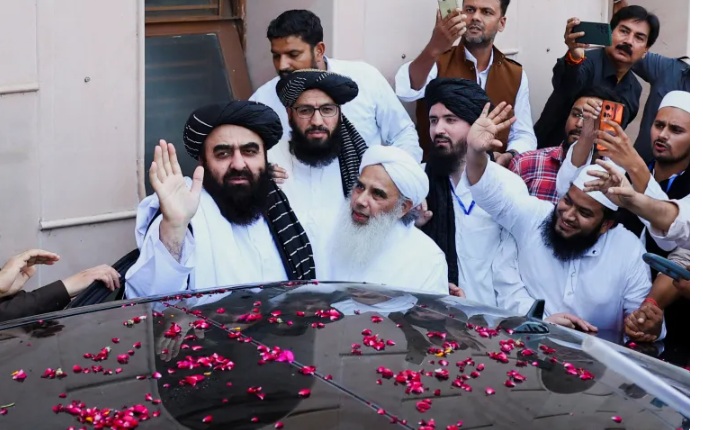
Red Carpet for Afghanistan's Foreign Minister, PoK Erupts & Pakistan Warns India
Amid Pakistan’s issues with both India and Afghanistan, the Indian government has laid the red carpet for the Taliban government. Afghanistan foreign minister Amir Khan Muttaqi is on a week-long visit to India and is being treated as a state guest ignoring the fact that the Taliban government is not yet recognized by any country in the world, including India. Muttaqi has invited India to invest in Afghanistan's minerals and requested New Delhi to help facilitate trade through the opening of the Wagah border, calling it the 'fastest trade route' between the two countries. Addressing a press conference in New Delhi on 12 Oct, Muttaqi said, 'I met the Indian External Affairs Minister (EAM) Subrahmanyam Jaishankar and talked about economy, trade, and other issues. During the meeting, the EAM announced the upgrading of their mission in Kabul to Embassy level and the diplomats of Kabul will arrive in New Delhi.' A delegation of Afghan Sikhs and Hindus met Muttaqi and requested Afghanistan to restore and maintain historical Gurdwaras and temples. Meanwhile, in an escalation of Pakistan-Afghanistan border tensions, firefights broke out along their border on 11 Oct, with Taliban-led Afghan forces seizing multiple Pakistani Army outposts along the Durand Line, including in the volatile Kunar and Helmand provinces. On 2 Oct, in Pakistan-Occupied Kashmir (POK) at least 12 civilians were killed as Pakistani security forces opened fire on protesters. The protests, which started over the government's failure to meet 38 key demands, have snowballed into a broader agitation against excesses by the military, bringing the region to a standstill. Concurrently, on 5 Oct, Rashtriya Swayamsevak Sangh (BJP's parent organization) chief Mohan Bhagwat said, 'PoK is a room in India that has been occupied by strangers, it must be taken back.' In response, Pakistan's Defence Minister Khawaja Asif has said, 'I do not want escalation, but the risks are real, and I am not denying that. If it comes to war, God willing, we will achieve a better result than before.’ All these developments are a matter of grave concern for Panjab but the region seems to have no say in the developments (earlier coverage).
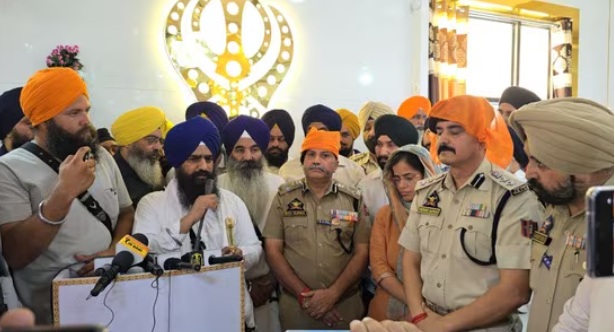
Guru Granth Sahib Desecration in J&K; Clash at Rajasthan Gurdwara
Jammu and Kashmir (J&K) police have arrested Manjit Singh alias Billa from Koulpur village in Samba district for allegedly desecrating multiple copies of the Guru Granth Sahib (Sikh charter) at the local Gurdwara Singh Sabha. Manjit set fire to the sacred scriptures using an inflammable substance late on 7 Oct night, prompting widespread protests from the Sikh community. Sri Akal Takht Sahib (Eternal Throne, AT) acting Jathedar (leader) Giani Kuldeep Singh Gargajj rushed to the site of the incident and met the local Sikh community. He announced a lifetime ban on all the office-bearers and members of the management committee of the Gurdwara. Senior civil and police officers, including Samba Deputy Commissioner Ayushi Sudan and Deputy Inspector General of Police of Jammu-Samba-Kathua Range Shiv Kumar Sharma, were present at the Gurdwara during the Jathedar’s visit. According to the Jathedar, five saroops (tomes) of the scripture were set on fire. 'Four saroops were destroyed completely, while one was partially damaged by the heat. Three people were involved. Police have arrested one and must produce the other two.' Following the incident, local Sikh residents set fire to Manjit’s house and later demolished it using bulldozers. Giani Gargajj said no action should be taken against those who have demolished Manjit’s home. Shiromani Gurdwara Parbandhak Committee (Sikh body) president Harjinder Singh Dhami has condemned the desecration. In the last decade, desecration of Sikh scriptures were confined to Panjab but now they are spreading outside the state. Since the 2015 desecration incident and firing in Behbal Kalan and Kotkapura on protesters, Panjab has not solved the cases. The frustration with the judicial system pushes the community to take law in its hands by way of instant justice. Advocate Harvinder Singh Phoolka recently informed that the Punjab and Haryana High Court has transferred some desecration cases out of Panjab. The Panjab government has not even filed an appeal that the cases must be tried in the state. Concurrently, on 3 Oct, Gurdwara Mehtabgarh Sahib at Mandi Goluwala in Hanumangarh district of Rajasthan became a site of clash between two Sikh groups. The SGPC has condemned the incident (earlier coverage).
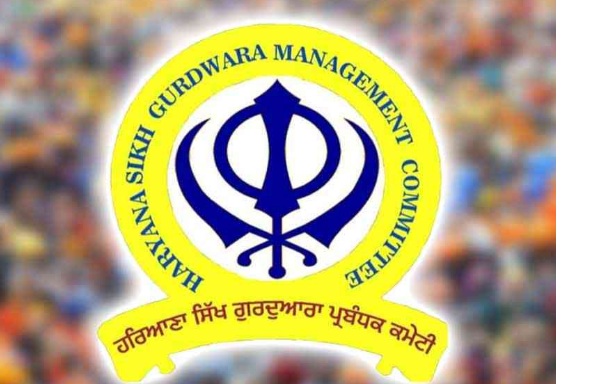
HSGMC President Loses Support; Tarn Taran By-Poll Nominations Open
On 7 Oct, 17 members of the Haryana Sikh Gurdwara Management Committee (HSGMC) announced withdrawal of their support to Committee President Jagdish Singh Jhinda demanding his resignation on moral grounds. At a special meeting held at the committee’s head office, Gurdwara Sahib Patshahi Chhevin in Kurukshetra, under the chairmanship of Senior Vice President Gurmeet Singh Ramsar, members accused Jhinda of 'wrongdoing and arbitrariness' in the functioning of the committee. Vice President Gurbir Singh Talakaur said Jhinda, who was elected president with the backing of 29 members in a 49-member house, no longer holds the majority. He added that despite written requests signed by 17 members—more than the 15 required under the Haryana Sikh Gurdwara Act, 2014—Jhinda has refused to convene the General House. Meanwhile in Panjab with just 15 months left until state elections, Aam Aadmi Party (AAP) eight councillors in the Sangrur Municipal Council, including the senior vice-president and vice-president, have resigned from the party. They cited 'dissatisfaction' with the municipal council president and the 'indifferent attitude' of senior party leaders. Sangrur is Panjab Chief Minister Bhagwant Singh Mann's home constituency. Also, Daljit Singh Miyadian, an AAP leader from the Rajasansi constituency and Director of the Punjab Dairy Development Board resigned from the party and joined Akali Dal Waris Punjab along with hundreds of his supporters. While Bharatiya Janata Party (BJP) alliance with Shiromani Akali Dal’s (SAD) is still uncertain, senior SAD leader Jagdeep Singh Cheema has quit his party to join BJP. Concurrently, according to Jasbir Singh Ghumman—the newly appointed general secretary of the parallel SAD headed by Giani Harpreet Singh—the party has completed its structural reorganization and is set to engage with key issues concerning Panjab and the Sikh community at both the state and national levels. The Tarn Taran by-poll nominations opened up on 13 Oct. Undertrail in Shiv Sena leader Sudhir Suri’s murder case Sandeep Singh alias Sunny’s brother Mandeep Singh is filing papers as an independent candidate (earlier coverage).
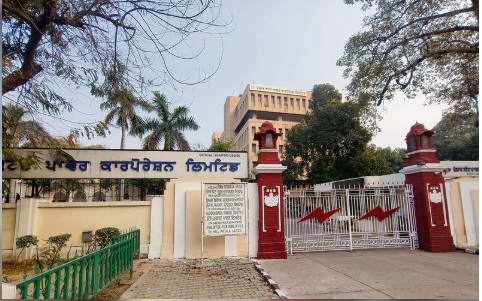
Panjab Trying to Auction Unutilized Land, Power Supply Unions Object
Panjab’s cash-strapped government is trying to auction off the vacant and unutilized government lands. After its Land Pooling Scheme crashed, this time around, the government wants to auction the properties in a phased manner. In the first phase, government properties in Sahibzada Ajit Sigh Nagar (SAS Nagar), Ludhiana, and Patiala are to be auctioned after the government has reworked and re-evaluated the price at which these properties are to be auctioned off. An unnamed official said, 'We have found that the reserve price kept for these properties is too high, much higher than the market assessment. As a result, these could not be auctioned in the past. We want to bring the reserve prices of these properties at par with the market rates in order to get bidders for competitive auctions.' Various unions of the Punjab State Power Corporation Limited (PSPCL) employees have opposed the government's move to auction around 40 PSPCL properties across the state. They demanded that the Panjab government should immediately stop the process and the properties should be used only for the expansion of its own future projects. The unions took a unanimous decision to oppose the move to sell or lease valuable lands and assets of the power sector. Concurrently, Panjab Leader of Opposition Indian National Congress' Partap Singh Bajwa has sought the intervention of Panjab Governor Gulab Chand Kataria in halting the move of the Punjab Mandi (Grain Markets) Board to transfer 12 acres of vegetable and fruit market in SAS Nagar to Punjab Urban Planning & Development Authority for auction. In his letter, Bajwa said, 'On the surface, this may be framed as an inter-governmental adjustment. In substance, it dismantles an operating public market, unsettles small traders who invested in good faith and erodes value to the public exchequer by substituting a true market discovery with an administrative rate.' Meanwhile, Panjab Chief Minister Bhagwant Singh Mann and Aam Aadmi Party national convener Arvind Kejriwal laid the foundation stone for setting up 3.1K sports grounds across the state. Kejriwal said modern playgrounds, equipped with modern facilities, for volleyball, football, hockey, and athletics, will be established in villages across the state (earlier coverage).
.jpg)
Panjab Unprepared for Elderly Care, Chandigarh Does Better
Despite having one of the highest proportions of elderly population in India, a study found Panjab's public healthcare system to be moderately prepared for geriatric-friendly services. There are gaps in workforce availability, infrastructure, and financial support across different levels of care. These findings emerge from the first comprehensive evaluation of geriatric service readiness conducted across all tiers of Panjab's public health system. With 12.6% of its people aged 60 years and above, Panjab ranks fourth among states in elderly population, which is expected to increase further in coming years. The cross-sectional survey was conducted by researchers from the All India Institute of Medical Sciences, Bathinda, in collaboration with Safdarjung Hospital, New Delhi and the National Programme for Health Care of the Elderly, Panjab. The study was published in the Journal of Family Medicine and Primary Care titled Assessment of the Public Health System Preparedness to Provide Geriatric-Friendly Healthcare Services in Punjab, India: A Cross-Sectional Study. The study said Panjab's healthcare system requires urgent and targeted interventions to meet the needs of its aging population. Panjab's public healthcare system demonstrates only a moderate level of preparedness in delivering geriatric-friendly services, with strengths noted in health management information systems and the availability of essential medical commodities. However, critical challenges remain in leadership, governance, and healthcare financing. District hospitals are comparatively better equipped, but peripheral facilities such as community health centers and primary health centers face acute shortages of funding, trained personnel, and infrastructural support needed for comprehensive geriatric care. Meanwhile, the Chandigarh Health Department has started an initiative to provide better healthcare services to the elderly residents who live alone and are bedridden. A team visits the elderly at their homes regularly and checks for various health issues. Launched on 19 Sep, the team received over 25 calls within the first fortnight. The service deploys a dedicated ambulance team comprising a doctor, nurse, and paramedic. Each day, the team attends to around five to six elderly patients, providing medical check-ups, counselling, basic treatment, and medicines if required. In case of a serious illness, patients are shifted to the Government Multi Specialty Hospital, Chandigarh.
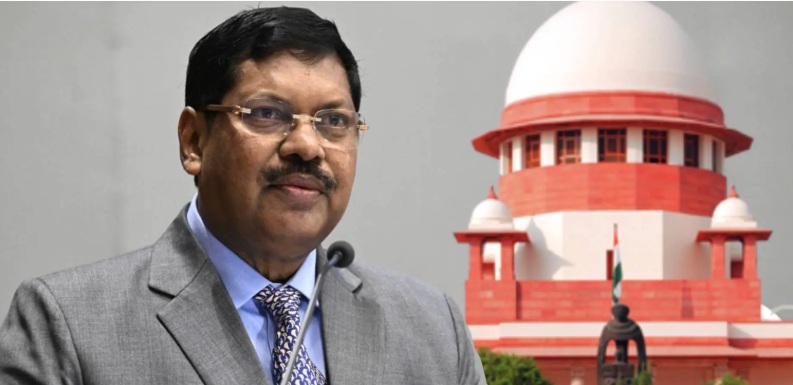
Multiple FIRs Lodged in Panjab Over Caste Discrimination in Other States
On 6 Oct, a 71-year-old Supreme Court of India lawyer Rakesh Kishore attempted to throw a shoe at the Chief Justice of India (CJI) Bhushan Ramkrishna Gavai in the court. The provocation was a Public Interest Litigation (PIL) which sought to restore a dilapidated statue of Lord Vishnu in one of the UNESCO heritage sites in Khajuraho, Madhya Pradesh. While dismissing the PIL as a stunt, Justice Gavai remarked, 'Go and ask the deity himself to do something.' The incident is being seen as an attack on the Constitution of India and on a Dalit (marginal caste) CJI by a follower of casteist Sanatan Dharama (ancient Hindu religion). While the Bar Council of India has suspended Kishore, no charges have been filed against him. The incident led to an uproar on social media with many supporting the lawyer. Following the receipt of numerous complaints from various districts on unlawful and objectionable social media content targeting the CJI, the Panjab Police have registered multiple First Information Reports (FIRs) under the Scheduled Castes and Scheduled Tribes (Prevention of Atrocities) Act, 1989. Similarly, on 9 Oct, the Ludhiana Police registered a FIR against partisan, rabble-rouser Aaj Tak television journalist Anjana Om Kashyap for allegedly insulting Lord Valmiki during a television debate. The FIR also names India Today group chairman and editor-in-chief Aroon Purie as well as Living Media India Ltd as accused. The FIR has been registered on the complaint of Chaudhary Yashpal, the national coordinator of a group—Bhartiya Valmiki Dharam Samaj Bhavadas. Meanwhile, on 7 Oct, Haryana cadre Indian Police Service officer Puran Kumar committed suicide. He had earlier complained about caste discrimination and left a suicide note naming 16 officers as responsible or his death. The Panjab unit of the Indian National Congress announced it will be holding candle marches demanding the immediate removal and arrest of Haryana Director General of Police Shatrujeet Singh. On 12 Oct, Acting Jathedar (leader) of Sri Akal Takht Sahib (Eternal Throne) condemned the incident and said that the supreme Sikh authority stands firmly against casteism and any form of discrimination.
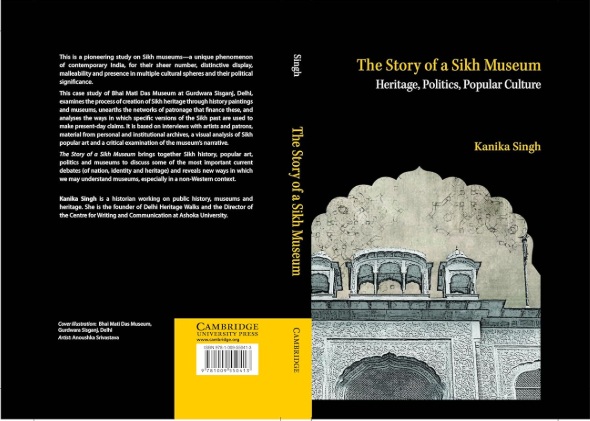
Story of a Sikh Museum
Yogesh Snehi reviews Kanika Singh’s book The Story of a Sikh Museum: Heritage, Politics, Popular Culture. The Sikh tradition has long had an ambivalent relationship with visual representations of its past. This artistic tradition has always been contested because art is shaped not only by its subject—in this case, Sikh history—but also by its style, medium, and interpretation. This visual tradition continued through the 19th century but underwent a major shift in the 20th century. A new generation of patrons and artists began depicting familiar subjects in a realist style, heavily influenced by European art. Changes in treatment, technique, The book examines how this modern tradition of realist painting shaped Sikh perceptions of their own past. It focuses on the 169 paintings commissioned by the Punjab and Sind Bank (PSB) since the 1970s—one of the largest efforts to create an authoritative visual narrative of Sikh history. These works inspired popular calendar art and led to the establishment of the Bhai Mati Das Museum (BMDM) in Delhi’s Chandni Chowk in 2001 by the Delhi Sikh Gurdwara Management Committee. This intersection of social reform, religious identity, and banking history offers fascinating insights into the evolution of patronage for realist art, especially in the form of thematic annual calendars. The paintings expanded the scope of Sikh visual narratives beyond piety-centered Janamsakhi (life stories) to include portraits and episodes from the lives of later Gurus, their battles and martyrdoms, significant devotees and events from the 19th and 20th centuries. Singh argues that Sikh museums, like BMDM, challenge conventional definitions of a museum. Rather than displaying artifacts, BMDM showcases modern realist paintings. Temporal and religious functions merge within this space, turning the museum into more than a historical archive — it becomes a living witness to Sikh political and spiritual memory. The book is a richly researched and deeply engaging study of how art, politics, and public memory intersect in the making of Sikh visual culture. It is an essential read for anyone interested in heritage, religious representation, and the evolving ways in which communities imagine and narrate their past. The book is published by Cambridge University Press.
Notes
Suggested Reading
Anilesh Mahajan in India Today: How Chidambaram's Blue Star remark opens Sikh wounds, exposes Congress contradictions.
Like what you're reading? Subscribe to our top stories.
Liv Forum provides a digest of analysis on major issues facing Indian (East) Panjab and Sikhs globally.
In accordance with our Privacy Policy, we will never share or sell the information of our subscribers.
On Guru Teghbahadar’s 350th Martyrdom Day, Panjab Declares Holy Cities
Panjab: Holy Cities; PU Defuses Possible Confrontation; Parts of Missing Trollies Found, India Eyes Chandigarh, then Blinks. Sikh: Gupta Was on NYPD Radar; Ottawa Sikh Protest Was Peaceful; YouTube Stops Gurbani Transmission for a Week—and more stories.

